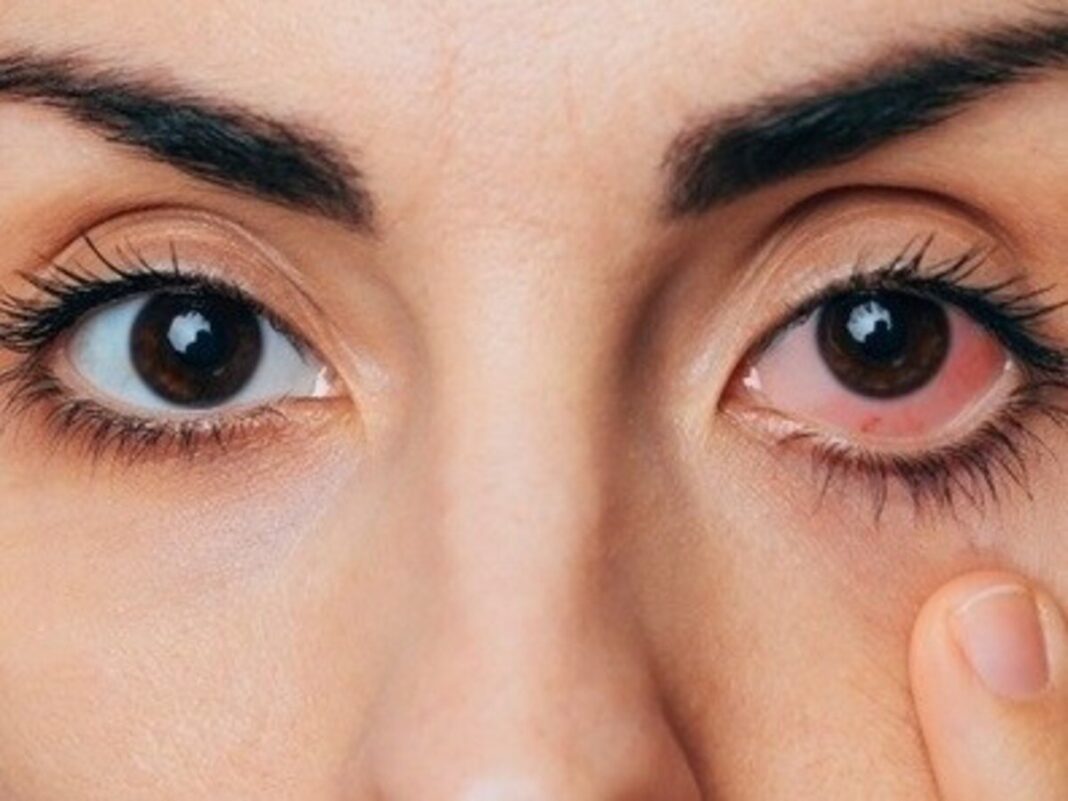Every year during monsoon season, we see around 20% of cases of what most people casually call eye flu. “Eye flu” isn’t a medically accepted term, “eye flu” is what most people refer to as viral conjunctivitis. It is an infection of the thin clear membrane which covers your eyeball white and the inside of your eyelids.
Most people think that eye infections caused by monsoon occur just because they get wet during rain. That is half the truth, and there is more science involved. The monsoon weather is more humid. Such conditions allow viruses and bacteria to survive airborne as well as on surfaces for prolonged periods, including on surfaces. Due to the congestion in schools, offices and even shopping malls, these places become hot spots for infection as a result of overcrowding.
The most frequent cause is the adenovirus, which is easily contracted through touch, sneezes, or sharing of common items. If someone touches his/her infected eye, rubs it and then goes ahead and catches a doorknob or handrail. The second person to come along rubs their eye and boom—now they’re infected too. This is the reason for the increase in cases after rainy season.
The symptoms of viral conjunctivitis typically start in one eye and may spread to the second. Redness is usually the first thing people notice, accompanied by watery or stringy discharge. Their lids may become slightly swollen, and they may have a gritty or burning sensation, like sand in the eye. Some have sensitivity to light or some itching. In addition to eye discomfort, some individuals may have sore throat, low-grade temperature, or just feel sick.
What’s going on in the eye is really your body retaliating. The conjunctiva — that thin covering that guards your eye — gets inflamed because the virus infects it. Inflammation leads to swelling of the small blood vessels in the eye, making the eye red and bloodshot. The sticky or watery mucus is simply a defense mechanism from the body to aid in dispelling the virus. Since there is a lack of strong natural immunity against viruses in the conjunctiva, infection can easily invade especially when someone’s immunity is low due to stress, fatigue, or diet.
Regardless, neglect of the infection can be troublesome. First, it spreads extremely fast — it’s common for whole office teams or school classrooms to become infected in a matter of days unless precaution is followed. In unusual instances, if the infection is more virulent or reaches the cornea, it can lead to blurred vision or sensitivity to light that persists even once the redness has passed. That’s why prompt care is necessary.
As far as contagiousness goes, eye flu spreads remarkably fast. It is highly infectious in the early days of the disease when the most noticeable symptoms occur. Risk exposure at home or shared locations greatly increases the chance. It can be contracted from handshakes, hugs, as well as touching towels, pillows, sunglasses, doorknobs, and even cell phones.
How does one go about protecting themselves and other people around them? Well, the first step these people can do is wash their hands with soap and water regularly. Try not rubbing or touching eyes especially in public. Do not use eye makeup or contact lenses until you are completely healed. While cold compresses can be safe to use for pain and swelling reduction, do not use any eye drops without prescription, especially steroids, as the condition can be aggravated if misused. Ensure both home and workplace are tidy and well aerated. Regular disinfection of desks, doorknobs and other shared materials shall be done in schools. Teachers are required to enforce handwashing and discouragement of eye touching to the children.
In case you do get infected, the next thing is to see an eye specialist for a proper diagnosis. Doctors may prescribe lubricating or antibiotic eye drops, though antibiotics only prevent secondary infections, not the viral infection itself. It’s best to keep home from school or work for a couple of days at least in order not to spread the infection. Do not use eye makeup or contact lenses until you are completely healed. While cold compresses can be safe to use for swelling and pain relief, do not use any non-prescription eye medications especially steroids, as the condition might worsen with abuse of these drugs.
Eye flu might not seem like a big deal, but it can certainly disrupt both your schedule and that of the people around you. The good news is that with the right hygiene practices and some careful observation, it is simple to prevent and control. During this monsoon season, protect yourself with proper hand washing and remember, like any other part of your body, your eyes need attention.
(The author, Dr. Palak Macwana, is a Consultant Pediatric Ophthalmology and Strabismus, at Sankara Eye Hospital, Hyderabad.)




